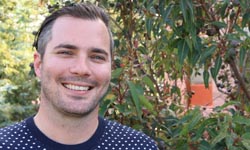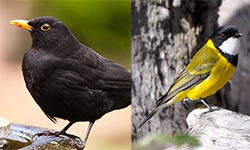* Land clearing for urban development has a massive influence on the native animal species that survive around urban areas, including Melbourne.
* CSU led research has found land sparing rather than land sharing is best for many populations of native birds, particularly as Melbourne grows.
 A team including a researcher from Charles Sturt University (CSU) has found that as Melbourne grows, it is better for many native bird populations to increase human numbers on existing urban land, rather than to continue the urban sprawl on Melbourne’s urban fringes.
A team including a researcher from Charles Sturt University (CSU) has found that as Melbourne grows, it is better for many native bird populations to increase human numbers on existing urban land, rather than to continue the urban sprawl on Melbourne’s urban fringes.
The findings were released in the latest issue of Biodiversity and Conservation.
Senior author of the paper and leading wildlife researcher Associate Professor Dale Nimmo said land development for extending urban areas had an extensive impact on native bird populations.
“When you clear land for urban infrastructure like factories, shops and roads, you take away extensive habitat for many birds and this reduces their numbers,” said Professor Nimmo, a member of the CSU Institute for Land, Water and Society.
Listen to Associate Professor Dale Nimmo
Loading...
The research project looked at policy option for conserving native animals in urban areas.
“We looked at land sharing, where we have low density housing, allowing more trees within our residential areas including household gardens, and land sparing, where the human population is housed in a smaller area, allowing for larger tracts of natural habitat such as forest and grasslands to be set aside for nature conservation,” Professor Nimmo said.
 “We grouped bird species as ‘urban avoiders’ (such as the golden whistler and white throated treecreeper) which find it difficult to survive in urban areas regardless of the density of the human population; ‘urban adapters’ (such as the crimson rosella and eastern spinebill) which do well in urban areas until population densities get particularly high; and ‘urban exploiters’ (such as the common blackbird and house sparrow) which thrive in high-density urban environments.”
“We grouped bird species as ‘urban avoiders’ (such as the golden whistler and white throated treecreeper) which find it difficult to survive in urban areas regardless of the density of the human population; ‘urban adapters’ (such as the crimson rosella and eastern spinebill) which do well in urban areas until population densities get particularly high; and ‘urban exploiters’ (such as the common blackbird and house sparrow) which thrive in high-density urban environments.”
“We then looked for the best approach to accommodating the human population while maximum bird diversity in and around urban areas.”
Professor Nimmo said the researchers developed complex statistical models that used extensive data sets to develop their findings.
“Our modelling showed that human population density had a large effect on the 28 species of birds reported. For the current population size of Greater Melbourne, we found a mix of land sharing and land sparing was best.
“However, as Melbourne’s population grows, land sparing clearly showed better results, particularly for the urban avoiders and urban adapters. They need large tracts of natural or semi-natural land as they depend on these habitats for food and safe nesting places.”
The research team, with members from Charles Sturt, La Trobe and Deakin universities, surveyed birds in 28 landscapes across Greater Melbourne, each landscape plot comprising 25 hectares. Human populations varied between zero and 1,600 persons on each plot.
“As Melbourne and other large metropolitan areas continue to expand, governments and land planners need to protect large tracts of natural areas on urban fringes from clearing to protect native birds and other animal species.
“Increasing density on existing areas of human population would help protect natural areas and it reduces need to clear more natural areas,” Professor Nimmo concluded.





Social
Explore the world of social